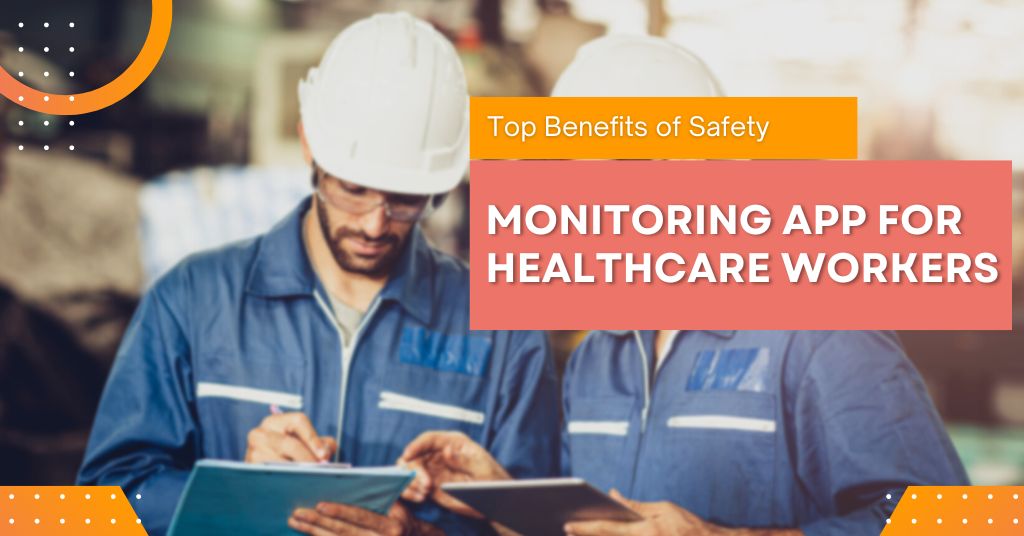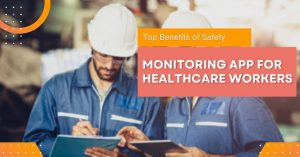Top Benefits of Safety Monitoring App for Healthcare Workers


The healthcare sector continues to grow in many countries around the world. In a post-pandemic industry landscape, more challenges present themselves in terms of worker safety, patient safety, and other related concerns.
These issues are compounded by how healthcare facilities are already considered some of the most hazardous work environments around. To ensure quality care for both patients and health workers, it’s more important than ever to ensure a safe environment.
Worker Safety for the Healthcare Industry
Both employers and employees are responsible for keeping a safe workplace. In a hospital setting, managers and administrators are responsible for preparing detailed instructions to prevent quality and safety failures.
Safety monitoring is especially important for hospitals and healthcare facilities, which have all kinds of hazards that include the following:
- Occupational infections – Health workers are at a higher risk for needle-related injuries, acute hepatitis B infection, and latent TB infection.
- Occupational injuries – Occupational injuries like electric shocks, trips, and falls, are common among health workers.
- Radiation exposure – Ionizing and non-ionizing radiation in the form of x-rays and UV lighting can pose a risk to health workers.
- Unsafe patient handling – Back injury and chronic back pain can result from lifting or moving patients without proper techniques or handling equipment.
4 Key Benefits of Lone Worker Safety Monitoring for Healthcare Workers
Ensuring a safe environment for healthcare workers and patients is critical for hospital and in-home care. Along with comprehensive training and safety policies, workers should also be equipped with the right tools.
For in-home healthcare workers, lone-worker safety solutions can help mitigate potential risks. These apps can ensure safety while staying connected and supported, allowing them to update information or request assistance when needed.
Additionally, a lone worker safety app can provide various benefits for healthcare workers, such as:
1. Staying ahead of health and safety guidelines
The post-pandemic landscape for the healthcare sector is completely different today. With the increased concerns for contamination and exposure from workers, administrators need to stay ahead of health and safety guidelines.
Having occupational health and safety (OHS) management software can be valuable in a hospital setting. Using OHS management software, administrators and hospital management can take advantage of the following:
- Create schedules for personnel (e.g. nurses, medical staff, resident doctors, etc.)
- Track credentials like training and competency records for seamless internal communication
- Supervise home healthcare workers via check-in text messages
2. Lone care workers can request assistance when needed
Nurses and home healthcare workers can take full advantage of incident reporting to improve patient care. With an OHS system, they can file reports that allow them to escalate certain cases.
OHS systems and lone worker apps also allow healthcare personnel to save time. With forms automation, medical documents and records can be updated right away to reflect changing conditions based on diagnoses.
Streamlined communication offered by a lone worker app doesn’t stop there. Healthcare workers can have better access to tech support for medical facilities and equipment. This is especially useful in cases when patients need CT or x-ray scans.
3. Creating a better health and safety management system
Safe, hazard-free environments improve the quality of patient care. To reduce work-related hazards, it’s important to create a comprehensive and proactive health and safety management system.
OHS systems and lone worker apps can help create this environment for home healthcare workers.
Because their environments can change regularly, these apps can help notify in-hospital staff of any changes in real-time. Managers can identify risks faster and take action to increase worker safety for home healthcare employees.
4. Streamlined documentation for improved worker and patient care
Tools like occupational health and safety management software can turn documents into digital forms.
Healthcare workers like doctors and nurses can update medical records to reflect the latest diagnoses, treatments, and procedures. Different departments can then access these documents using a central database to communicate better.
Medical personnel can also use form automation to improve outpatient care. Digital files can be filled and shared with in-hospital pharmacies to provide the proper prescriptions.
The Bottom Line
The healthcare sector often runs the highest risk of work-related injuries and illnesses, especially during high patient loads. As a result, administrators and managers are responsible for giving employees the means to mitigate said risks.
Ensuring health and safety for both patients and healthcare workers requires a combination of both detailed procedures and appropriate tools. OHS systems and worker safety apps are among these tools.
While it’s no substitute for a medical health and safety professional, a lone worker app can help employees ensure safety. Their core features allow for more streamlined communication and task automation, all of which can lead to saving lives.



